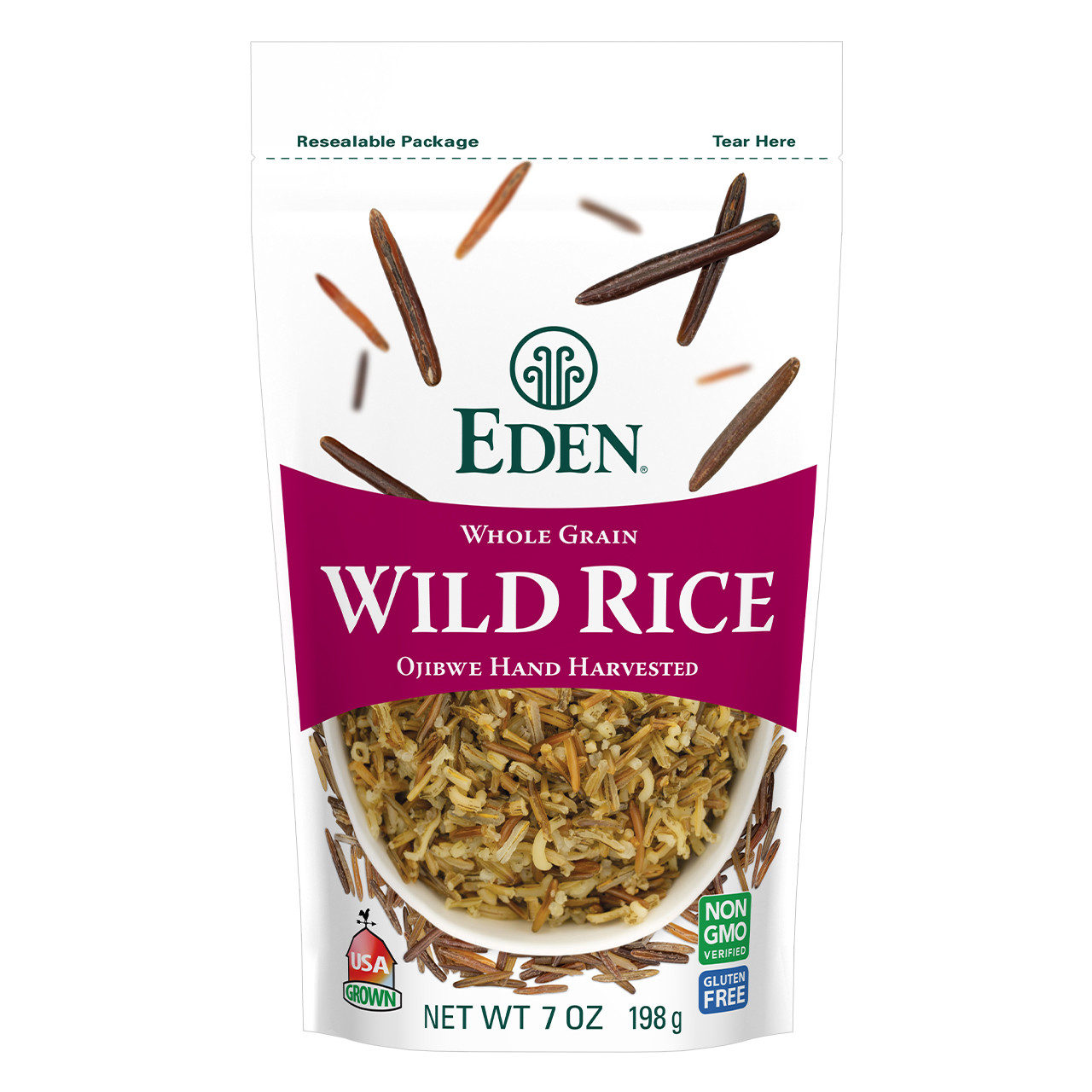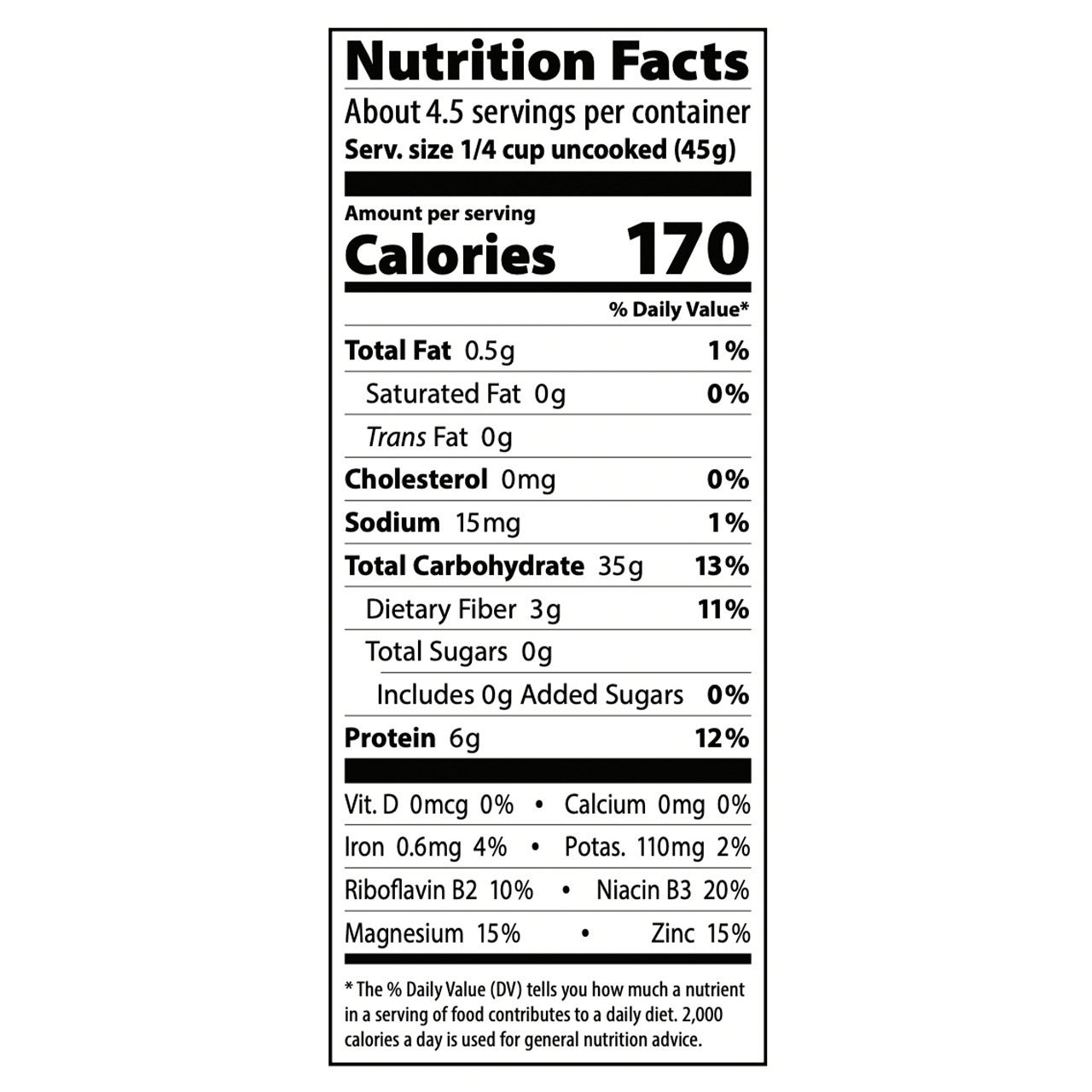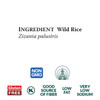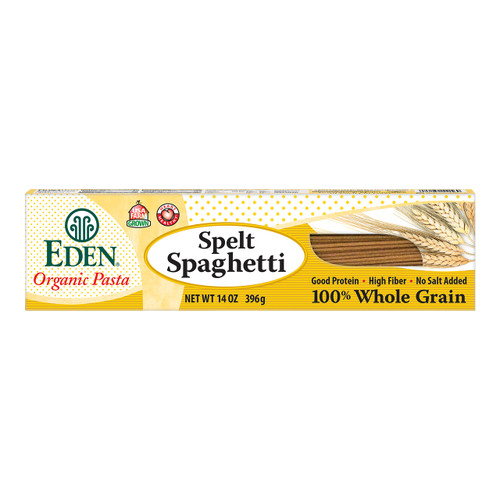Hand harvested by the Minnesota Leech Lake band of Ojibwe, Native Americans, in canoes as required by law. Wood fire parched, stupendous whole grain. Quick cooking and fluffy, not hard like paddy grown black hybrid varieties. Eden wild rice was Vegetarian Times 2009 'Best Go To Grain'. Rich in niacin B3 and manganese. A good source of fiber, protein, thiamin B1, riboflavin B2, magnesium, and zinc. Gluten free. It comes in a reclosable, protective, standing pouch. ![]()
MORE DETAILS
Eden Wild Rice is hand harvested in canoes as required by law from northern Minnesota lakes by the Leech Lake band of Ojibwe. State and tribal law distinguish authentic wild rice as Native harvested using the non-mechanized methods that have been handed down through generations for over a thousand years. Eden Wild Rice supports the traditional culture and helps to preserve this age-old harvest. It offers the experience of true wild rice, light, fluffy, and sweet.
'Best Go To Grain'
Eden Wild Rice is wood fire parched, delicious whole grain. Quick cooking and fluffy, not hard like paddy grown black hybrid varieties. Eden Wild Rice was Vegetarian Times 2009 'Best Go To Grain'.
History
The only indigenous North American grain, wild rice is an annual aquatic reed grass of 12 feet with a 2 foot flowering panicle. It is of the Poaceae (Gramineae) or grain family, not a true rice of the Oryza genus. It is Gluten Free.
Eden Wild Rice Zizania palutris is authentic wild rice, strikingly different from paddy grown wild rice. Domesticated, paddy grown 'wild rice' is almost all black, very hard, takes much longer to cook, and after cooking has a tough texture. The vast majority of items labeled as wild rice are paddy grown in California and not subject to labeling laws that distinguish authentic wild rice. The real thing, as is Eden Wild Rice, it truly amazing. Most notably it is soft and delicious.
There are hundreds of different wild rice varieties that have developed growing in different environs. Water quality, temperature, depth and composition of mud in various lake beds impart subtle differentiations. Authentic wild rice is threatened by contamination from paddy grown, domesticated strains that are grown in close to real wild rice stands, or that are shipped into these areas to be processed for better imitation. A law passed by Congress in May 2007 requires disclosure and environmental impact statements from anyone that may attempt to create genetically engineered wild rice. While this is well intended, the law falls short of a ban and genetically engineered contamination of wild rice remains a very real concern.
In old Ojibwe history their ancestors were directed by the Creator to move West from their home in the East or perish. They were told to go to the land where food grows upon the water. When reaching this place their western migration should stop. Finding wild rice growing upon the water they named it manoomin or 'good berry' and resettled. Only much later did European settlers call it wild rice.
In addition to being a sacred component of Native American culture and tradition, wild rice is vital to the lakes' ecology and their flora and fauna. Wild rice stands provide habitat for waterfowl, fish, and many species that rely on it for food and the rice beds as haven and nursery.
Harvesting
Eden Wild Rice is harvested from the end of August through early September. The Ojibwe call this 'rice harvest moon' or 'Manoominike Giizis.' Law requires modern wild rice harvesting be done by Native American ricers in canoes. There are two in each canoe, a poler who propels and guides the canoe and a knocker in the middle. The poler uses a forked pole about 20 feet long to protect the plants. The knocker uses two cedar sticks resembling large drumsticks to harvest the rice as the canoe passes through the reeds. Alternating between left and right hands, he uses one stick to pull rice stalk over the canoe and the other to tap the rice loose from the stalk into the canoe. Unripe grains stay on the stalk. Some will re-seed the lake after ripening. When full the canoe is poled to shore where the rice is winnowed to remove its chaff, and parched on a wood fire roaster. This drying by wood fire roasting impart stability and flavor.
Nutrition Facts
According to FDA, "Diets rich in whole grain and other plant foods, and low in total fat, saturated fat, and cholesterol may reduce the risk of heart disease and some cancers." Also, "Low fat diets rich in fiber-containing grain products, fruits, and vegetables may reduce the risk of some types of cancer, a disease associated with many factors." Eden Wild Rice is low fat, contains no saturated fat or cholesterol, and is a good source of dietary fiber. It is very low sodium, 15mg per 1/4 cup serving or 1% DV (Daily Value), an excellent source of niacin B3 and manganese, and a good source of protein, fiber, thiamin B1, riboflavin B2, magnesium, and zinc. Gluten Free.
Eden Wild Rice is delicious, light and fluffy whole grain that is perfect for holidays meals and year round as an entrée, in soups, stews, salads, grain burgers, desserts, pancakes, waffles, and bread making. It is great combined with and enhancing other grains. Mix it with vegetables, nuts, seeds, and dried fruit for stuffing or wild rice pilaf. Cook some extra and use leftovers during the week to make so many dishes. It stores well without loosing its flavor when refrigerated.

















